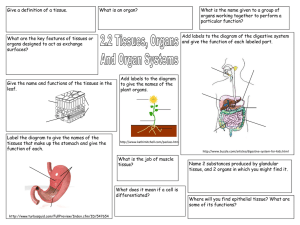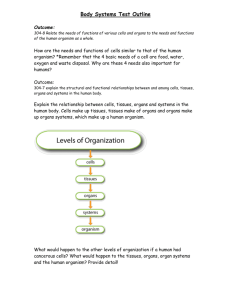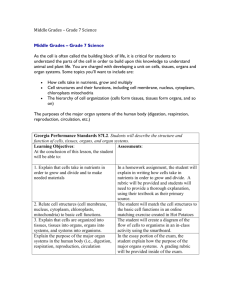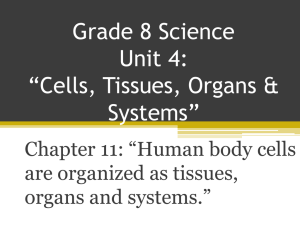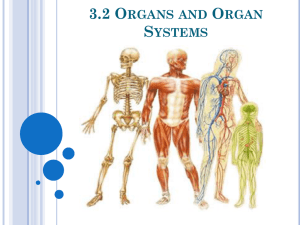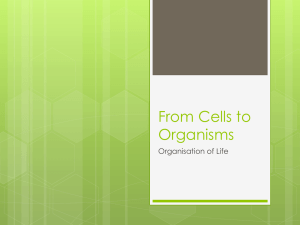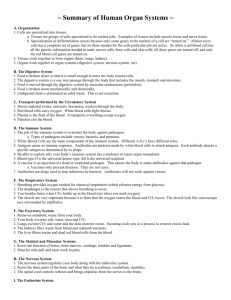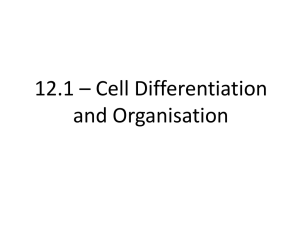Plant and Animal Organs Specification
advertisement
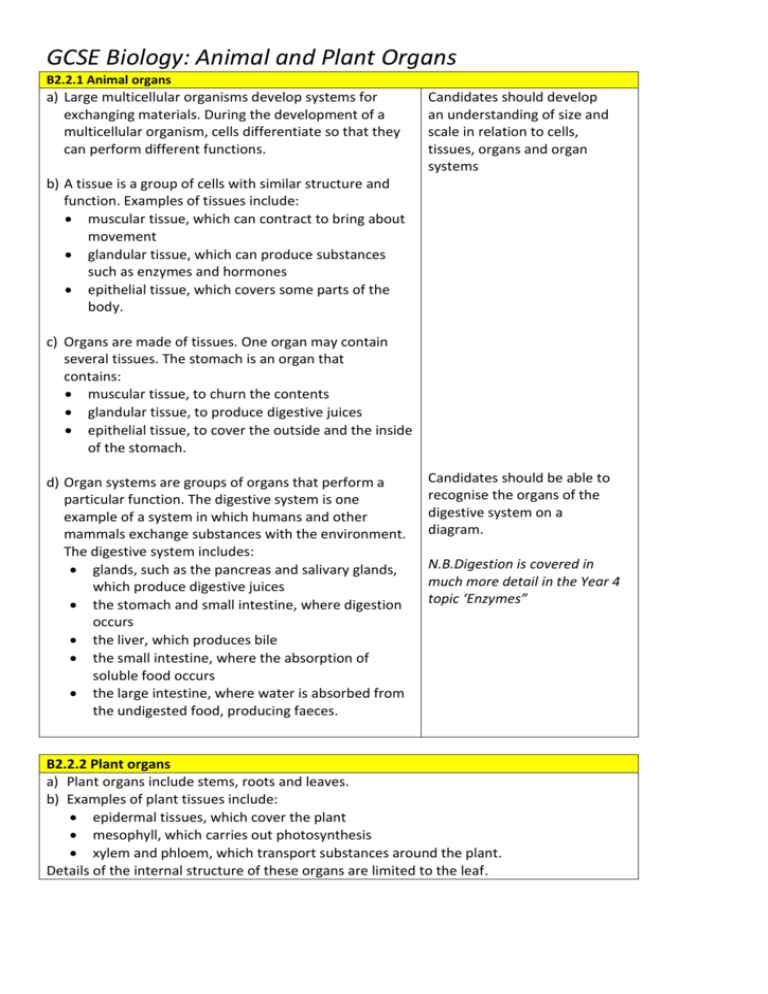
GCSE Biology: Animal and Plant Organs B2.2.1 Animal organs a) Large multicellular organisms develop systems for exchanging materials. During the development of a multicellular organism, cells differentiate so that they can perform different functions. Candidates should develop an understanding of size and scale in relation to cells, tissues, organs and organ systems b) A tissue is a group of cells with similar structure and function. Examples of tissues include: muscular tissue, which can contract to bring about movement glandular tissue, which can produce substances such as enzymes and hormones epithelial tissue, which covers some parts of the body. c) Organs are made of tissues. One organ may contain several tissues. The stomach is an organ that contains: muscular tissue, to churn the contents glandular tissue, to produce digestive juices epithelial tissue, to cover the outside and the inside of the stomach. d) Organ systems are groups of organs that perform a particular function. The digestive system is one example of a system in which humans and other mammals exchange substances with the environment. The digestive system includes: glands, such as the pancreas and salivary glands, which produce digestive juices the stomach and small intestine, where digestion occurs the liver, which produces bile the small intestine, where the absorption of soluble food occurs the large intestine, where water is absorbed from the undigested food, producing faeces. Candidates should be able to recognise the organs of the digestive system on a diagram. N.B.Digestion is covered in much more detail in the Year 4 topic ‘Enzymes” B2.2.2 Plant organs a) Plant organs include stems, roots and leaves. b) Examples of plant tissues include: epidermal tissues, which cover the plant mesophyll, which carries out photosynthesis xylem and phloem, which transport substances around the plant. Details of the internal structure of these organs are limited to the leaf.



